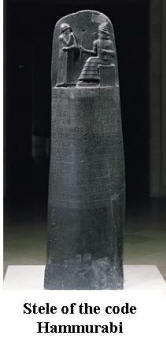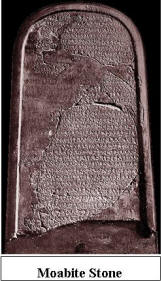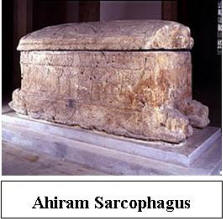
For many the question on how was the Bible written is a mystery. Even if someone agrees on the inspiration of the Bible, for many the mystery remains on how the Bible became the Bible? If God revealed His words to Moses, how did those words get from Moses to us today? The question easily extends itself to all 40 writers of the 66 books, which make up the Bible. What was the language was the Bible written in? What was it written on? These questions among others face the student of Bible origins. Critics who attack the Bible play on the lack of historical and archeological knowledge to level their charges.
Critics ask the question, how did the Bible become the Bible? Charging the Bible was the result of “Oral transmission”, claiming, writing did not exist in the days of Abraham and Moses. Therefore, the Bible was written down after long periods, its words are not reliable. In fact, they theorize the Bible is a collection of near-east mythology.
Was the Bible transmitted orally?
Before we understand this question, we need to understand Oral Transmission. Oral transmission (tradition) is the process of verbal transmission as opposed to written transmission. Oral transmission relies on the ability of the previous generation, to pass on the stories, traditions and history verbally, from one generation to the next.
relies on the ability of the previous generation, to pass on the stories, traditions and history verbally, from one generation to the next.
One of the most well known bible critics is Julius Wellhausen (1844-1918). Wellhausen is a German biblical scholar who put forward the Documentary Hypothesis theory concerning the Bible. His theory was based on the idea, that the Bible, specifically the Torah (5-books of Moses,) was not authored by Moses but by different authors via oral tradition. He identified these strands (authors) as J-E-D-P, each letter representing a different source of authorship, according to Wellhausen the different strands were collected and put together in the Torah, at a later period. His theory dismisses the authorship of Moses, branding the Torah as a fabrication.
Wellhausen based his theory on the idea that writing did not appear amongst the Hebrews until many years after Moses. R.K. Harrison, rejects the basis of the Wellhausen theory, writing,
Hebrew is a Semitic language, and Abraham was from the city of Ur, which was a very literate culture even during the times of Abraham. From the region of Babylon, one of the most famous written documents preserved in stone is the Code of Hammurabi (1792-1750 B.C.), who lived within 250 years of the life of Abraham. On the stele, the laws of ancient Babylon were recorded for generations to come. Hammurabi, also lived 300-years before the time of Moses. So Wellhausen contention of Hebrews not being able to write down the events in their past is not founded on fact, but is completely without merit.
In addition to the Code of Hammurabi, there are many proofs of the “Literate” culture, which both Abraham and Moses existed.
Moses who is credited with writing the Torah (Five books of Moses; Genesis, Exodus, Leviticus, Numbers and Deuteronomy) was educated in the house of Pharaoh, he would have been literate not only in Egyptian but the surrounding cultures in his day. In the book of Job, dated to the Patriarchal period (2100-1800 B.C.) before the time of Moses, Job refers to writing and the material on which one writes. Writing with an Iron pen upon stone and lead is clearly described; lead a soft material could be inscribed with an Iron stylus. Soft Clay was also a material used to write upon, preserving the words of the writer.

Other documents exist clearly documenting the existence of writing in the time of Moses, and the invasion of the Hebrews into the land of Canaan. These documents are the Letters from the Tell El-Amarna. A peasant woman digging in the dirt discovered these letters in 1887. The letters were written in Akkadian (Babylonian) script with some Canaanite glosses. These letters dated to the conquest of Joshua, mention the invasion of Habiru (Hebrews).
Also Confirming the written language outside of the Bible is the Moabite stone (Mesha Stele), which is dated to the time of King Mesha of Moab. He was a contemporary of Jehoshaphat, king of Judah (870-848 BC), and Joram, king of the northern kingdom of Israel (852-841 BC). The Moabite Stone gives King Mesha’s point of view of the events of 2 Kings 3. The alphabet and the language on the stone were both Moabite, which a language closely related to Hebrew. Encyclopedia Britannica says the following on the Moabite Language
 “Eastern subdivision of the Canaanite branch of the early Semitic alphabet, closely related to the early Hebrew alphabet. The best-known example of the Moabite alphabet is from the Meshaʿ, or Moabite, Stone (Louvre, Paris), which was discovered in 1868 at Dibon, east of the Dead Sea. The stone bears a 34-line inscription of Meshaʿ, king of Moab, dating from the middle of the 9th century BC. Until the discovery of the Aḥiram inscription in 1923 at Byblos, the Meshaʿ Stone was considered the earliest extant alphabetic inscription.
“Eastern subdivision of the Canaanite branch of the early Semitic alphabet, closely related to the early Hebrew alphabet. The best-known example of the Moabite alphabet is from the Meshaʿ, or Moabite, Stone (Louvre, Paris), which was discovered in 1868 at Dibon, east of the Dead Sea. The stone bears a 34-line inscription of Meshaʿ, king of Moab, dating from the middle of the 9th century BC. Until the discovery of the Aḥiram inscription in 1923 at Byblos, the Meshaʿ Stone was considered the earliest extant alphabetic inscription.
The Moabite stone is incontrovertible evidence of a rich Hebrew language and culture, which corresponds to the Moabite civilization, the Moabites were a subject nation to Israel, during the time of Mesha. Even older then the Moabite stone by almost 400 years, is the inscription on the sarcophagus of Ahiram king of Byblos (1250 B.C), which is the earliest “known” writing of the Phoenician alphabet.
The existence of written language and communication during the time of Abraham (2100 B.C.) and Moses (1450 B.C.) is demonstrated by both history and archaeology. There is no need for oral transmission of scripture when the written language was so pervasive. The books of Moses lay claim to a written transmission of the Torah. The king of Israel was to write a copy of the Law (Torah), and read from his copy.
18 "Also it shall be, when he sits on the throne of his kingdom, that he shall write for himself a copy of this law in a book, from the one before the priests, the Levites. 19 "And it shall be with him, and he shall read it all the days of his life, that he may learn to fear the Lord his God and be careful to observe all the words of this law and these statutes,
Literacy was both expected and common in the culture of the Exodus, contrary to the critics of the Bible.
1 comment:
Hope you don't mind if I link you in my blogsite. Thank you for visiting mine too!
The Bibble is a compilation of books written by various people on certain periods of time, 300 years after the "death" of Christ. But there was never a single proof that stated the chapters of the Bible are of miraculous origin.
Post a Comment